
Riesling is a white grape variety that originated in the Rhine region. Riesling is an aromatic grape variety displaying flowery, almost perfumed, aromas as well as high acidity. It is used to make dry, semi-sweet, sweet, and sparkling white wines. Riesling wines are usually varietally pure and are seldom oaked. As of 2004, Riesling was estimated to be the world's 20th most grown variety at 48,700 hectares, but in terms of importance for quality wines, it is usually included in the "top three" white wine varieties together with Chardonnay and Sauvignon blanc. Riesling is a variety that is highly "terroir-expressive", meaning that the character of Riesling wines is greatly influenced by the wine's place of origin.
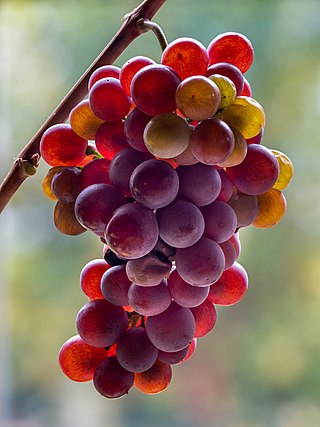
Pinot gris, Pinot grigio or Grauburgunder is a white wine grape variety of the species Vitis vinifera. Thought to be a mutant clone of the pinot noir variety, it normally has a pinkish-gray hue, accounting for its name, but the colors can vary from blue-gray to pinkish-brown. The word pinot could have been given to it because the grapes grow in small pinecone-shaped clusters. The wines produced from this grape also vary in color from a deep golden yellow to copper and even a light shade of pink, and it is one of the more popular grapes for skin-contact wine.

Mosel is one of 13 German wine regions (Weinbaugebiete) for quality wines , and takes its name from the Mosel River. Before 1 August 2007 the region was called Mosel-Saar-Ruwer, but changed to a name that was considered more consumer-friendly. The wine region is Germany's third largest in terms of production but some consider it the leading region in terms of international prestige.

Grüner VeltlinerGerman:[ˈɡʁyːnɐfɛltˈliːnɐ] ) is a white wine grape variety grown primarily in Austria, Hungary, Slovakia, and the Czech Republic. The leaves of the grape vine are five-lobed with bunches that are long but compact, and deep green grapes that ripen in mid-late October in the Northern Hemisphere.

German wine is primarily produced in the west of Germany, along the river Rhine and its tributaries, with the oldest plantations going back to the Roman era. Approximately 60 percent of German wine is produced in the state of Rhineland-Palatinate, where 6 of the 13 regions (Anbaugebiete) for quality wine are situated. Germany has about 103,000 hectares of vineyard, which is around one tenth of the vineyard surface in Spain, France or Italy. The total wine production is usually around 10 million hectoliters annually, corresponding to 1.3 billion bottles, which places Germany as the eighth-largest wine-producing country in the world. White wine accounts for almost two thirds of the total production.

Bacchus is a white wine grape created by viticulturalist Peter Morio at the Geilweilerhof Institute for Grape Breeding in the Palatinate in 1933. He crossed a Silvaner x Riesling cross with Müller-Thurgau.
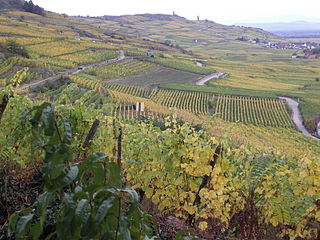
Alsace wine or Alsatian wine is produced in the Alsace region in France and is primarily white wine. Because of its Germanic influence, it is the only Appellation d'Origine Contrôlée region in France to produce mostly varietal wines, typically from similar grape varieties to those used in German wine. Along with Austria and Germany, it produces some of the most noted dry Rieslings in the world as well as highly aromatic Gewürztraminer wines. Wines are produced under three different AOCs: Alsace AOC for white, rosé and red wines, Alsace Grand Cru AOC for white wines from certain classified vineyards and Crémant d'Alsace AOC for sparkling wines. Both dry and sweet white wines are produced.

Müller-Thurgau is a white grape variety which was created by Hermann Müller from the Swiss Canton of Thurgau in 1882 at the Geisenheim Grape Breeding Institute in Germany. It is a crossing of Riesling with Madeleine Royale. It is used to make white wine in Germany, Austria, Northern Italy, Hungary, England, Australia, the Czech Republic, Slovakia, Slovenia, New Zealand, Canada, the United States, Belgium and Japan. There are around 22,201 hectares ) cultivated worldwide, which makes Müller-Thurgau the most widely planted of the so-called "new breeds" of grape varieties created since the late 19th century. Although plantings have decreased significantly since the 1980s, as of 2019 it was still Germany's second most planted variety at 11,400 hectares and 11.4% of the total vineyard surface. In 2007, the 125th anniversary was celebrated at the Geisenheim Grape Breeding Institute. Müller-Thurgau is also known as Rivaner, Riesling x Sylvaner, Riesling-Sylvaner, Rizvanec (Slovenia) and Rizlingszilváni (Hungary).
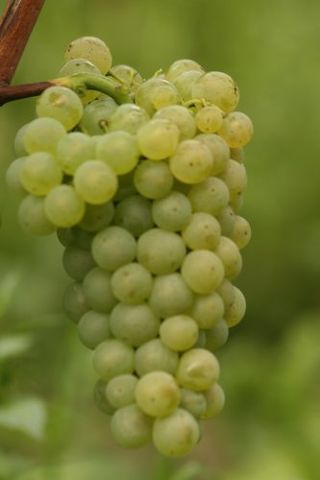
Scheurebe or Sämling 88 is a white wine grape variety. It is primarily grown in Germany and Austria, where it often is called Sämling 88, and some parts of the New World. Scheurebe wines are highly aromatic, and the variety is often used for sweet wines, although dry Scheurebe wines have become more common in Germany.
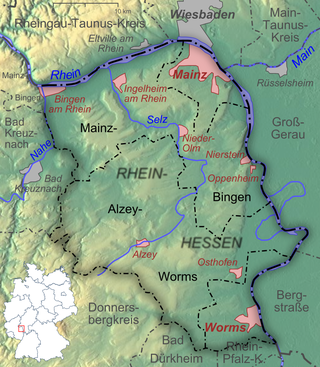
Rheinhessen is the largest of 13 German wine regions (Weinanbaugebiete) for quality wines with 26,758 hectares under cultivation in 2018. Named for the traditional region of Rhenish Hesse, it lies on the left bank of the Rhine between Worms and Bingen in the federal state of Rhineland-Palatinate. Despite its historic name it is currently no longer part of the federal-state of Hesse, this being the case since the end of World War II. There have been several unsuccessful attempts to legally reunite the former wine growing districts of Mainz on the Hessian side during the post-war area. Rheinhessen produces mostly white wine from a variety of grapes, particularly Riesling, Müller-Thurgau and Silvaner, and is best known as the home of Liebfraumilch, although some previously underrated Rieslings are also made, increasingly in a powerful dry style.
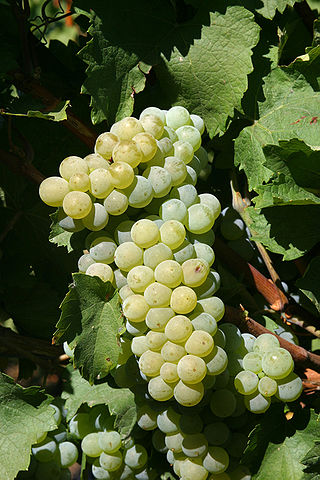
Elbling is a variety of white grape which today is primarily grown in the upstream parts of the Mosel region in Germany and in Luxembourg, where the river is called Moselle. The variety has a long history, and used to cover much of Germany's vineyards from medieval times and was that country's most cultivated variety until the early 20th century, but has been in decline ever since. As of 2006, there were 583 hectares of Elbling vineyards in Germany, which made it the country's 23rd most grown variety of grape. Of that vineyard surface, 575 ha or 98.6% was found in the Mosel region In the same year, there were 122.9 hectares of Elbling grown in Luxembourg.

The Hessische Bergstraße is a defined region (Anbaugebiet) for wine in Germany located in the state of Hesse among the northern and western slopes of the Odenwald mountain chain. With only 467 hectares of vineyards it is the smallest of the 13 German quality wine regions. At 21% red grape varieties and 79% white varieties, it is planted with primarily Riesling, Pinot gris (12%) and Spätburgunder. Hessische Bergstraße is divided into two districts (Bereiche) – Umstadt and Starkenburg – three collective vineyard sites and 24 individual vineyard sites.

Baden is a region (Anbaugebiet) for quality wine in Germany, and is located in the historical region of Baden in southwestern Germany, which today forms part of the federal state of Baden-Württemberg. Under German wine legislation, Baden and Württemberg are separate wine regions.

Württemberg is a region (Anbaugebiet) for quality wine in Germany, and is located in the historical region of Württemberg in southwestern Germany, which today forms part of the federal state of Baden-Württemberg. Under German wine legislation, Württemberg and Baden are separate wine regions.

Nahe is a region (Anbaugebiet) for quality wine in Germany, along the River Nahe in the state of Rhineland-Palatinate. On the region's 4,155 hectares of vineyards in 2008, white wine grapes dominate with 75% and Riesling is the most common variety with 27.2%. A characteristic of the Nahe region is that the soils are very varied owing to the region's volcanic origins.

Solaris is a variety of grape used for white wine. It was created in 1975 at the grape breeding institute in Freiburg, Germany by Norbert Becker.
Optima is a white wine grape that was created by viticulturalist Peter Morio at the Geilweilerhof Institute for Grape Breeding in the Palatinate in 1930. Morio crossed a Riesling x Silvaner cross with Müller-Thurgau. The Riesling x Silvaner is sometimes mentioned as Rieslaner, but more often just as "a Riesling x Silvaner". Due to the random element of genetic recombination involved in sexual reproduction of plants, no two crosses of the same parent grape varieties will be identical, so there is a difference between the Riesling x Silvaner cross Rieslaner, and each other such cross.

Ehrenbreitsteiner is a white wine grape variety of German origin. It was created by Helmut Becker at the Geisenheim Grape Breeding Institute in 1964, by crossing the varieties Ehrenfelser and Reichensteiner. It was granted plant variety rights in 1993 and was certified in 1994.

The Okanagan Valley wine region, located within the region of the same name in the British Columbia Interior, is Canada's second-largest wine producing area. Along with the nearby Similkameen Valley, the approximately 8,619 acres of vineyards planted in the Okanagan account for more than 80% of all wine produced in British Columbia, and are second in economic importance for wine production to the Niagara Peninsula of Ontario. Some 182 licensed wineries existed from south to north in the valley in 2018, with many situated along the 135 km (84 mi)-long Okanagan Lake and its tributaries and downstream lakes, including Skaha Lake, Vaseux Lake, and Osoyoos Lake. The Okanagan has diverse terrain that features many different microclimates and vineyard soil types, contributing characteristics which are part of an Okanagan terroir.

Olmo grapes are wine and table grape varieties produced by University of California, Davis viticulturist Dr. Harold Olmo. Over the course of his nearly 50-year career, Dr. Olmo bred a wide variety of both grapes by means of both crossing varieties from the same species or creating hybrid grapes from cultivars of different Vitis species.



















